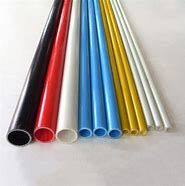Which Level of Fire Test Does PVC Plastic Have to Comply With According to DIN 4102-1?
Regarding the grade of PVC plastic in fire test, generally: PVC (polyvinyl chloride) plastic usually belongs to B1 or B2 grade.
ØB1 grade (flammable material):
Material properties meet some conditions: PVC plastic may reach B1 grade after special flame retardant treatment. B1 grade materials have flame retardant properties under certain conditions, slow burning speed and small flame propagation range. Adding suitable flame retardants and other chemicals to PVC can improve its combustion performance, so that it has better flame retardancy under specified test conditions. For example, in some PVC wire sheath products used in construction, flame retardants are added to slow down the burning speed and prevent the rapid spread of flames when encountering small fire sources.
ØB2 grade (combustible material):
Untreated or improperly treated conditions: If PVC plastic has not been effectively flame retardant or the amount of flame retardant added is insufficient, it will usually be judged as B2 grade. B2 grade materials are easy to burn under specified test conditions, with a faster burning speed and a larger flame propagation range. Ordinary PVC films or some low-quality PVC products may show strong flammability and fast flame propagation in fire tests.
It should be noted that the specific fire rating of PVC plastics is also affected by its formula (such as the type and proportion of plasticizers, fillers and other ingredients), the shape and thickness of the product and other factors. In practical applications, for PVC products used in areas with high fire protection requirements such as construction, fire tests should be strictly carried out in accordance with DIN 4102-1 standards to determine their accurate fire rating.
DIN 4102-1 Fire Test- Standard Name:
DIN 4102-1 Fire behaviour of building materials and elements Part 1: Classification of building materials Requirements and testing
DIN 4102-1 Fire Test - Other applicable products:
Plate/sheet
Composite materials
Assembly materials
Surface covering materials
Insulation materials
Coatings
Etc.
info@CASfire.cn
RZ202411

Send Inquiry to This Supplier
You May Also Like
-
Explore BS 476 - 4 Non-combustibility Test for Building MaterialsNegotiableMOQ: 1 Piece
-
Share the Complete Test Process of Applying for British Flame Retardant BS6807 for Medical MattressesNegotiableMOQ: 1 Piece
-
Discover EN 15102: A Guide to the EU Standard for Adhesive Decorative MaterialsNegotiableMOQ: 1 Piece
-
Let me Tell You the Difference Between ISO 12952-1 and ISO 12952-2 Flame Retardant Tests in One MinuteNegotiableMOQ: 1 Piece
-
Is Steel Structure Coating Applicable to BS 476-21 Fire Resistance Standard?NegotiableMOQ: 1 Piece
-
One Minute to Take You Through ISO 12952-1 Textiles - Flame Retardant Properties of Bedding - Cigarette TestsNegotiableMOQ: 1 Piece
-
Can a Raincoat Apply to the 16 CFR 1611 Flammability Standard for Polyethylene Plastic Film?NegotiableMOQ: 1 Piece
-
How Much do You Know About United States Standard 16 CFR 1610 Textile and Apparel Flammability Test?NegotiableMOQ: 1 Piece
-
Yishuo Will Take You to Understand the Flame Test of CAN/ULC S109 Flame Retardant Fabrics and FilmsNegotiableMOQ: 1 Piece
-
Why do Carpets Have to be Tested for 16CFR1630 Surface Flammability?NegotiableMOQ: 1 Piece


























